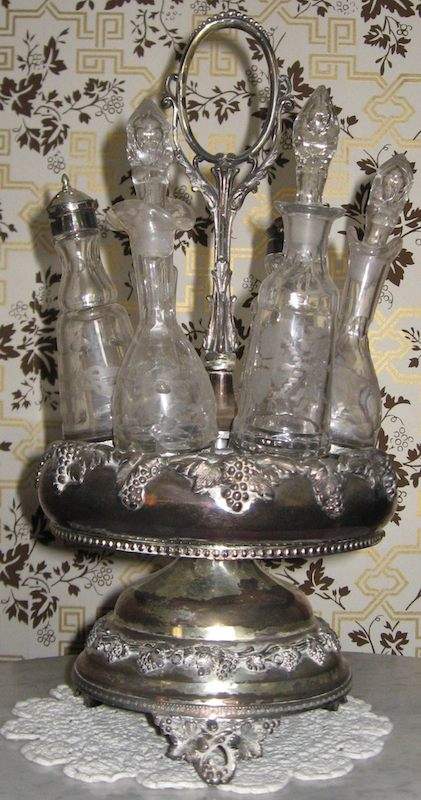Vinegar holds a sweet spot in Quincy history

Vinegar is a humble liquid scarcely used today. There was a time, however, when its use was widespread, and Quincy factories were devoted to its production. Quincy from its early days had at least one vinegar works in operation. Grocers and suppliers carried barrels of it.
In 1852 John Wood Jr. and Wm. M. Anderson formed a partnership to provide supplies and groceries to stores. They purchased the entire stock of J. Burn's and Co. when that man decided to head to California to try his luck in the West. Wood and Anderson's ads prominently featured cider vinegar each week, along with everything else from flour to summer fashions.
Vinegar occupied a prominent role in the kitchen for flavoring and preserving food, and it was used in brewing beer and in baking bread. In other areas of the home it functioned as a solvent and cleaning fluid. Vinegar has antibacterial properties, so it was used in medicines and for combating disease.
Preserving food by pickling does not hold the pride of place it did in the era before refrigeration (the late 1800s and even up until World War II). A competent homemaker learned to do all kinds of pickling. Vegetables and fruits can be combined in endless ways using salt, spices, sweeteners and, most importantly, vinegar. Still today, state fairs offer ribbons and bragging rights for the best pickles.
Back when sugar and most spices had to be purchased, vinegar was one essential item of pickling that could be produced at home. Vinegar was used to pickle proteins as diverse as oysters and pork hocks, potted herring and pickled fish, and was needed to make molasses candy. It was the secret ingredient in soups, and when combined with tarragon elevated that humble staple, cabbage soup. In short, it was a necessary ingredient to life in early Illinois. One 1808 housekeeping book recommended that a family always have a barrel or two in production.
In 1851 "Miss Leslie's Directions for Cookery" instructed the home brewer to take six quarts of rye meal and stir and mix it well into a barrel of strong hard cider. Then add a gallon of whiskey. Cover the cask, set it in the part of the yard "most exposed to air," and in about a month, if it is warm dry weather, you will have good, useful vinegar.
Vinegar had its dark side, too. A spoonful of vinegar was recommended each day as a health tonic. However, due to the alcoholic content of vinegar at this time, some women were said to be "addicted to vinegar."
There was a terrible scandal among the early Seventh-day Adventists when one of the leading women in the movement, Sarah White, confessed to being addicted to this fluid.
She told of her long and difficult struggle to be free of vinegar in words sounding eerily like those used to describe withdrawal symptoms.
Vinegar also was listed as an ingredient in early embalming fluid.
In 1861, Quincy had one "vinegar factory" at 9 Front St. and another at Sixth and Kentucky. The vinegar business was tied to apple orchard production and required a lengthy process to produce the tangy liquid. It also required a lot of barrels, space and storage facilities. Outside of cold storage, cider or vinegar were the two main ways that a bumper crop of apples could be processed and stored to lengthen their market time. It was a perfect way to use less-than perfect fruit.
The vinegar factory on Front Street had changed hands by 1884 and was owned by Adam Doersam. By 1890 he had moved the facility to 301-303 S. Seventh and called it Gem City Cider and Vinegar. Doersam's competition was Quincy Cider and Vinegar, located on North 11th. In 1891 William Rahn was listed as owner at 410 N. 11th, which became Rahn and Tofall by 1896. In 1900 the factory on 11th was listed as belonging to August Moenning.
Rahn and Tofall had moved to 10th and Broadway, where the vinegar works remained. Tofall would sell to George Janssen, who until the 1930s would run the vinegar works, as well as a pickle factory and a produce and grocery company.
The odiferous nature of the vinegar used in sauerkraut and pickles produced by Janssen in 200-gallon vats provided an unusual opportunity during Prohibition. Enterprising moonshiners set up a still nearby at 1028 Broadway behind a tin shop. The fermenting cabbage and cucumbers in the pickle factory masked the scent of cooking sour mash, which was to be distilled into whiskey. There was precedent for this strategy, as witnessed by a story in a Quincy newspaper in 1898 of an illicit distillery in New York City that was hidden within a vinegar factory.
Government revenue agents also may have read the story, for the large still in Quincy was raided and dismantled before it could begin production. This huge contraption was said to be a third larger than any still seen in Adams County and capable of producing hundreds of barrels of illegal whiskey each day.
The story of vinegar factories in Quincy ended when the big brick building that had sat unused and in disrepair at 10th and Broadway was torn down in September 1945.
Beth Lane is the author of "Lies Told Under Oath," the story of the 1912 Pfanschmidt murders near Payson. and is executive director of the Historical Society of Quincy and Adams County.






